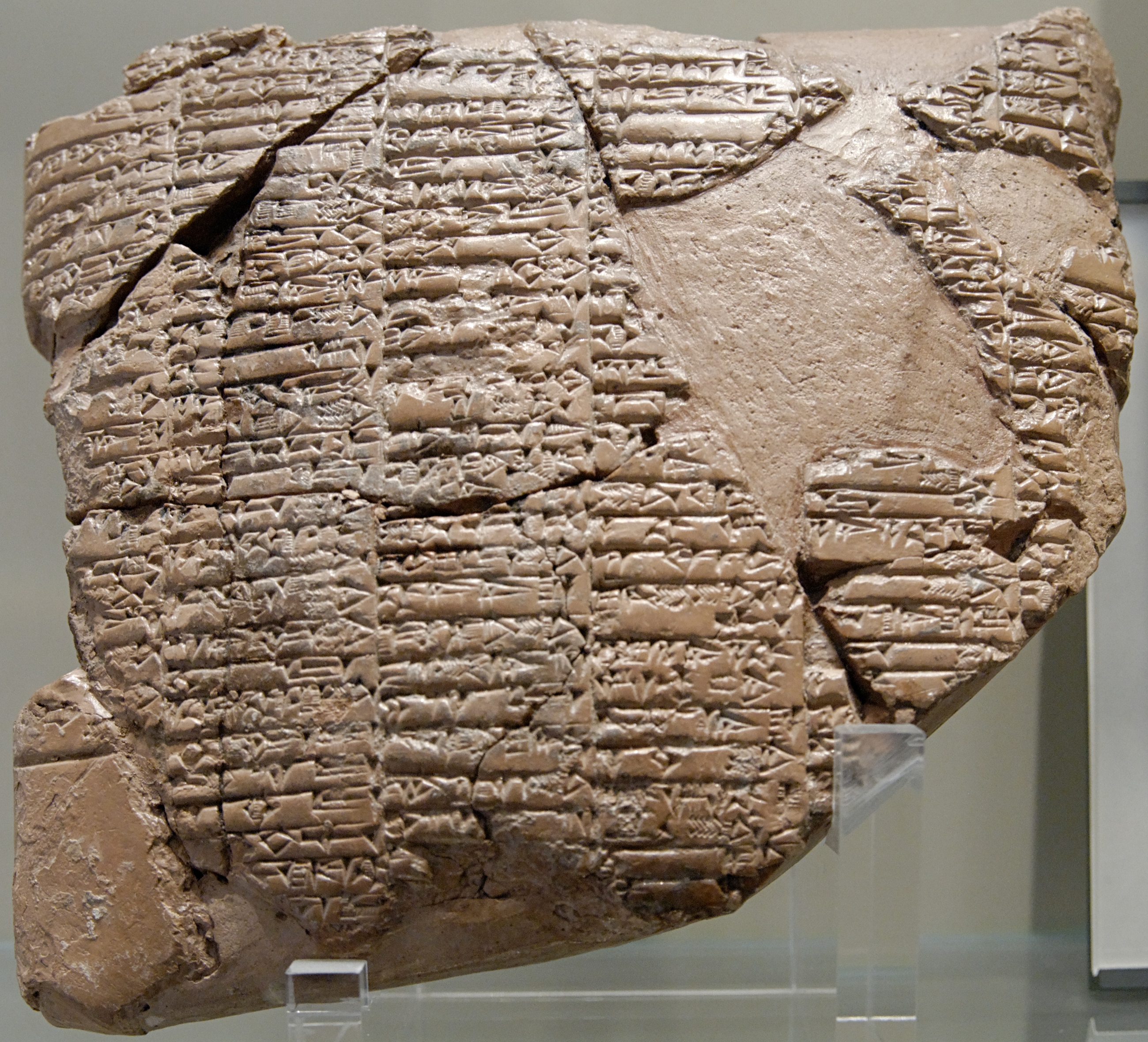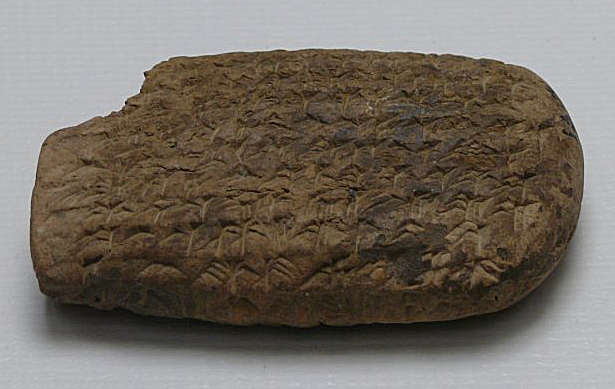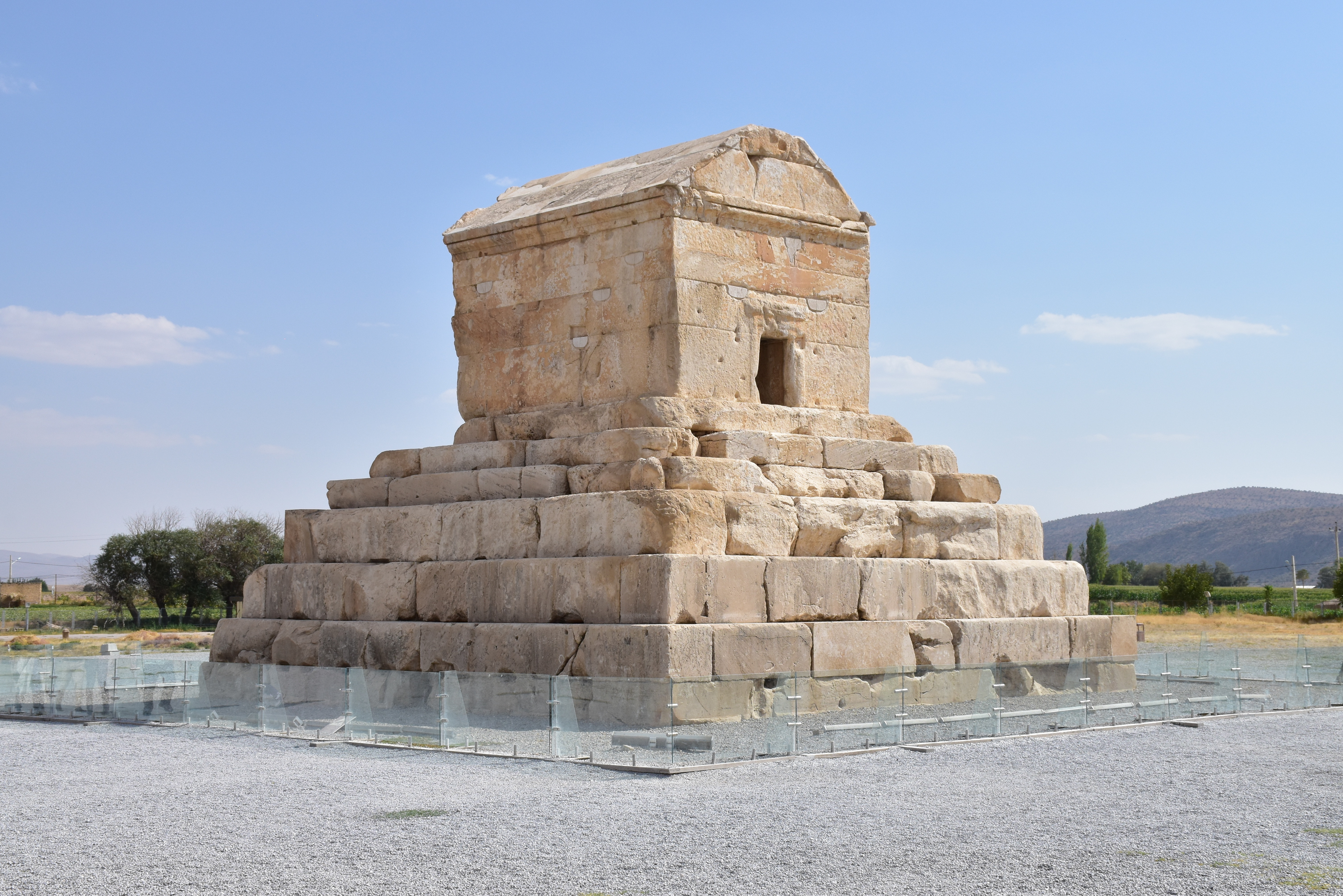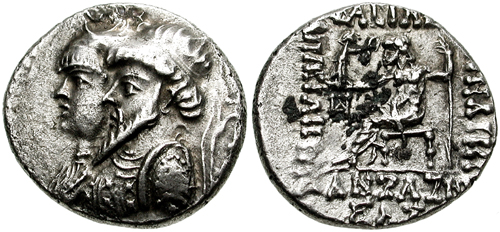|
Elamite
Elamite, also known as Hatamtite and formerly as Scythic, Median, Amardian, Anshanian and Susian, is an extinct language that was spoken by the ancient Elamites. It was recorded in what is now southwestern Iran from 2600 BC to 330 BC. Elamite is generally thought to have no demonstrable relatives and is usually considered a language isolate. The lack of established relatives makes its interpretation difficult. A sizeable number of Elamite lexemes are known from the Achaemenid royal inscriptions – trilingual inscriptions of the Achaemenid Empire, in which Elamite was written using Elamite cuneiform (circa 5th century BC), which is fully deciphered. An important dictionary of the Elamite language, the ''Elamisches Wörterbuch'' was published in 1987 by W. Hinz and H. Koch. The Linear Elamite script however, one of the scripts used to write the Elamite language circa 2000 BC, has remained elusive until recently. in Writing system The following scripts are known or assumed to h ... [...More Info...] [...Related Items...] OR: [Wikipedia] [Google] [Baidu] |
Elam
Elam () was an ancient civilization centered in the far west and southwest of Iran, stretching from the lowlands of what is now Khuzestan and Ilam Province as well as a small part of modern-day southern Iraq. The modern name ''Elam'' stems from the Sumerian language, Sumerian transliteration ''elam(a)'', along with the later Akkadian language, Akkadian ''elamtu'', and the Elamite ''haltamti.'' Elamite states were among the leading political forces of the Ancient Near East. In classical literature, Elam was also known as Susiana ( ; ''Sousiānḗ''), a name derived from its capital Susa. Elam was part of the early Cities of the Ancient Near East, urbanization of the Near East during the Chalcolithic period (Copper Age). The emergence of written records from around 3000 BC also parallels Sumerian history, where slightly earlier records have been found. In the Old Elamite period (Bronze Age, Middle Bronze Age), Elam consisted of kingdoms on the Iranian plateau, centered in Ansha ... [...More Info...] [...Related Items...] OR: [Wikipedia] [Google] [Baidu] |
Linear Elamite
Linear Elamite was a writing system used in Elam during the Bronze Age between , and known mainly from a few extant monumental inscriptions. It was used contemporaneously with Elamite cuneiform and records the Elamite language. The French archaeologist and his colleagues have argued that it is the oldest known purely phonographic writing system, although others, such as the linguist Michael Mäder, have argued that it is partly logographic. There have been multiple attempts to decipher the script, aided by the discovery of a limited number of multilingual and bigraphic inscriptions. Early efforts by (1912) and Ferdinand Bork (1905, 1924) made limited progress. Later work by and furthered the work. Starting in 2018, Desset outlined some of his proposed decipherments of the script accomplished with a team of other scholars. Their proposed near-complete decipherment was published in 2022, being received positively by some researchers while others remain sceptical until detaile ... [...More Info...] [...Related Items...] OR: [Wikipedia] [Google] [Baidu] |
Proto-Elamite Script
The Proto-Elamite script is an early Bronze Age writing system briefly in use before the introduction of Elamite cuneiform. There are many similarities between the Proto-Elamite tablets and the contemporaneous proto-cuneiform tablets of the Uruk IV period in Mesopotamia. Both writing systems are a relatively isolated phenomenon. Singletons aside tablets have been found at only five Proto-Elamite sites. For comparison, Proto-cuneiform tablets have only been found at Uruk, Jemdet Nasr, Khafajah, and Tell Uqair, and the vast majority of each type have been found at Susa and Uruk. The tablet blanks themselves, the inscribing method, even the practice of using the reverse for summation, when needed, are the same. They serve the same basic function which is administrative accounting of goods in a centrally controlled society. From that base, there are also differences, the signs themselves being the most obvious but extending to smaller areas such as the order in which the tablet ... [...More Info...] [...Related Items...] OR: [Wikipedia] [Google] [Baidu] |
Achaemenid Royal Inscriptions
The Achaemenid royal inscriptions are the surviving inscriptions in cuneiform script from the Achaemenid Empire, dating from the 6th to 4th century BCE (reigns of Cyrus the Great, Cyrus II to Artaxerxes III). These inscriptions are primary sources for the history of the empire, along with archaeological evidence and the administrative archives of Persepolis. However, scholars are reliant on Greek sources (such as Herodotus) to reconstruct much of Achaemenid history. The Achaemenid royal inscriptions differ from earlier Assyrian and Babylonian inscriptions in their multilingualism, rhetorical style and their structure.Matthew W. Stolper: ''Achämenid Languages and Inscriptions.'' In: John E. Curtis, Nigel Tallis (Hrsg.): ''Forgotten Empire. The World of Ancient Persia.'' University of California Press, Berkeley/ Los Angeles 2005, S. 18–24. The inscriptions are mostly trilingual – in Old Persian cuneiform, Old Persian, Elamite cuneiform, Elamite and Akkadian language, Babylo ... [...More Info...] [...Related Items...] OR: [Wikipedia] [Google] [Baidu] |
Proto-Elamite (period)
The Proto-Elamite period, also known as Susa III, is a chronological era in the ancient history of the area of Elam, dating from . In archaeological terms this corresponds to the late Banesh period. Proto-Elamite sites are recognized as the oldest civilization in Iran. The Proto-Elamite script is an Early Bronze Age writing system briefly in use before the introduction of Elamite cuneiform. History Background During the period 8000–3700 BC, the Fertile Crescent witnessed the spread of small settlements supported by agricultural surplus. Geometric tokens emerged to be used to manage stewardship of this surplus. The earliest tokens now known are those from two sites in the Zagros region of Iran: Tepe Asiab and Ganj-i-Dareh Tepe. The Mesopotamian civilization emerged during the period 3700–2900 BC amid the development of technological innovations such as the plough, sailing boats, and copper metal working. Clay tablets with pictographic characters appeared in this p ... [...More Info...] [...Related Items...] OR: [Wikipedia] [Google] [Baidu] |
Elamite Cuneiform
Elamite cuneiform was a logo-syllabic script used to write the Elamite language. The corpus of Elamite cuneiform consists of tablets and fragments. The majority were created during the Achaemenid era, and contain primarily economic records. History and decipherment The Elamite language (c. 2600 BCE to 400 BCE), is the now-extinct language spoken by Elamites, who inhabited the regions of Khūzistān and Fārs in Southern Iran. It has long been an enigma for scholars due to the scarcity of resources for its research and the irregularities found in the language. It seems to have no relation to its neighboring Semitic and Indo-European languages.Starostin, George (2002) Scholars fiercely argue over several hypotheses about its origin, but have no definite theory. Elamite cuneiform comes in two variants, the first, derived from Akkadian, was used during the 3rd to 2nd millennia BCE, and a simplified form used during the 1st millennium BCE.Khačikjan (1998) The main difference b ... [...More Info...] [...Related Items...] OR: [Wikipedia] [Google] [Baidu] |
Akkadian Cuneiform
Cuneiform is a logo- syllabic writing system that was used to write several languages of the Ancient Near East. The script was in active use from the early Bronze Age until the beginning of the Common Era. Cuneiform scripts are marked by and named for the characteristic wedge-shaped impressions (Latin: ) which form their signs. Cuneiform is the earliest known writing system and was originally developed to write the Sumerian language of southern Mesopotamia (modern Iraq). Over the course of its history, cuneiform was adapted to write a number of languages in addition to Sumerian. Akkadian texts are attested from the 24th century BC onward and make up the bulk of the cuneiform record. Akkadian cuneiform was itself adapted to write the Hittite language in the early second millennium BC. The other languages with significant cuneiform corpora are Eblaite, Elamite, Hurrian, Luwian, and Urartian. The Old Persian and Ugaritic alphabets feature cuneiform-style signs; however ... [...More Info...] [...Related Items...] OR: [Wikipedia] [Google] [Baidu] |
Persepolis Administrative Archives
The Persepolis Administrative Archive (also Fortification Archive or Treasury Archive) are two groups of clay administrative archives — sets of records physically stored together – found in Persepolis dating to the Achaemenid Persian Empire. The discovery was made during legal excavations conducted by the archaeologists from the Oriental Institute of the University of Chicago in the 1930s. Hence they are named for their in situ findspot: Persepolis. The archaeological excavations at Persepolis for the Oriental Institute were initially directed by Ernst Herzfeld from 1931 to 1934 and carried on from 1934 until 1939 by Erich Schmidt.Henkelman 2008:Ch 2. While the political end of the Achaemenid Empire is symbolized by the burning of Persepolis by Alexander the Great (dated 330/329 BCE), the fall of Persepolis paradoxically contributed to the preservation of the Achaemenid administrative archives that might have been lost due to passage of time and natural and man-made c ... [...More Info...] [...Related Items...] OR: [Wikipedia] [Google] [Baidu] |
Cuneiform
Cuneiform is a Logogram, logo-Syllabary, syllabic writing system that was used to write several languages of the Ancient Near East. The script was in active use from the early Bronze Age until the beginning of the Common Era. Cuneiform scripts are marked by and named for the characteristic wedge-shaped impressions (Latin: ) which form their Grapheme, signs. Cuneiform is the History of writing#Inventions of writing, earliest known writing system and was originally developed to write the Sumerian language of southern Mesopotamia (modern Iraq). Over the course of its history, cuneiform was adapted to write a number of languages in addition to Sumerian. Akkadian language, Akkadian texts are attested from the 24th century BC onward and make up the bulk of the cuneiform record. Akkadian cuneiform was itself adapted to write the Hittite language in the early second millennium BC. The other languages with significant cuneiform Text corpus, corpora are Eblaite language, Eblaite, Elamit ... [...More Info...] [...Related Items...] OR: [Wikipedia] [Google] [Baidu] |
Achaemenid
The Achaemenid Empire or Achaemenian Empire, also known as the Persian Empire or First Persian Empire (; , , ), was an Iranian empire founded by Cyrus the Great of the Achaemenid dynasty in 550 BC. Based in modern-day Iran, it was the largest empire by that point in history, spanning a total of . The empire spanned from the Balkans and Egypt in the west, most of West Asia, the majority of Central Asia to the northeast, and the Indus Valley of South Asia to the southeast. Around the 7th century BC, the region of Persis in the southwestern portion of the Iranian plateau was settled by the Persians. From Persis, Cyrus rose and defeated the Median Empire as well as Lydia and the Neo-Babylonian Empire, marking the establishment of a new imperial polity under the Achaemenid dynasty. In the modern era, the Achaemenid Empire has been recognised for its imposition of a successful model of centralised bureaucratic administration, its multicultural policy, building complex infrast ... [...More Info...] [...Related Items...] OR: [Wikipedia] [Google] [Baidu] |
Achaemenid Empire
The Achaemenid Empire or Achaemenian Empire, also known as the Persian Empire or First Persian Empire (; , , ), was an Iranian peoples, Iranian empire founded by Cyrus the Great of the Achaemenid dynasty in 550 BC. Based in modern-day Iran, it was the List of largest empires#Timeline of largest empires to date, largest empire by that point in history, spanning a total of . The empire spanned from the Balkans and ancient Egypt, Egypt in the west, most of West Asia, the majority of Central Asia to the northeast, and the Indus Basin, Indus Valley of South Asia to the southeast. Around the 7th century BC, the region of Persis in the southwestern portion of the Iranian plateau was settled by the Persians. From Persis, Cyrus rose and defeated the Medes, Median Empire as well as Lydia and the Neo-Babylonian Empire, marking the establishment of a new imperial polity under the Achaemenid dynasty. In the modern era, the Achaemenid Empire has been recognised for its imposition of a succ ... [...More Info...] [...Related Items...] OR: [Wikipedia] [Google] [Baidu] |
Elymais
Elymais or Elamais (Ἐλυμαΐς, Hellenic form of the more ancient name, Elam) was an autonomous state of the 2nd century BC to the early 3rd century AD, frequently a vassal under Parthian control. It was located at the head of the Persian Gulf in Susiana (the present-day region of Khuzestan, Iran). Most of the population probably descended from the ancient Elamites, who once had control of that area. General information The Elymaeans were reputed to be skilled archers. In 187 BC, they killed Antiochus III the Great after he had pillaged their temple of Bel. Nothing is known of their language, even though Elamite was still used by the Achaemenid Empire 250 years before the kingdom of Elymais came into existence. A number of Aramaic inscriptions are found in Elymais. The region's "wealth in silver and gold" is referred to in the deutero-canonical work 1 Maccabees, which refers to Elymais as a "city" of interest to Antiochus IV Epiphanes: the narrative there states ... [...More Info...] [...Related Items...] OR: [Wikipedia] [Google] [Baidu] |











